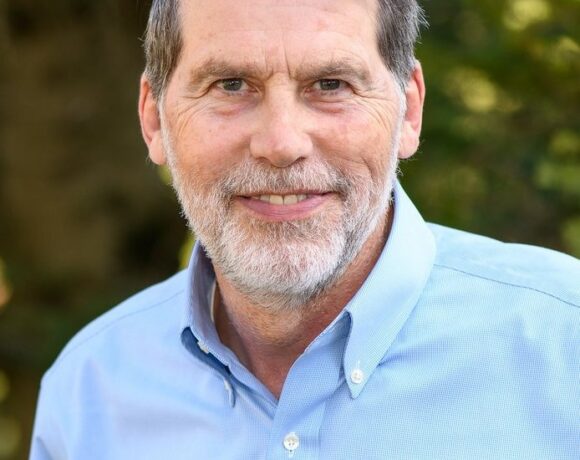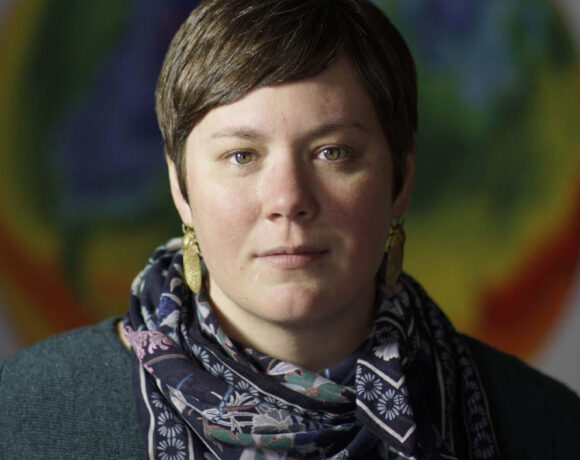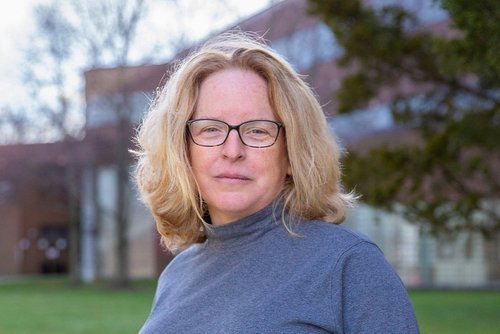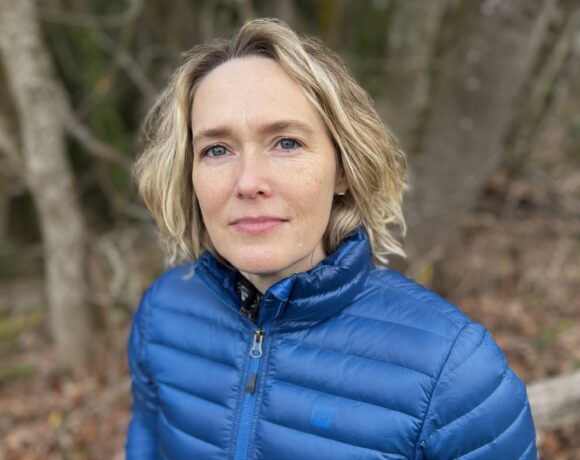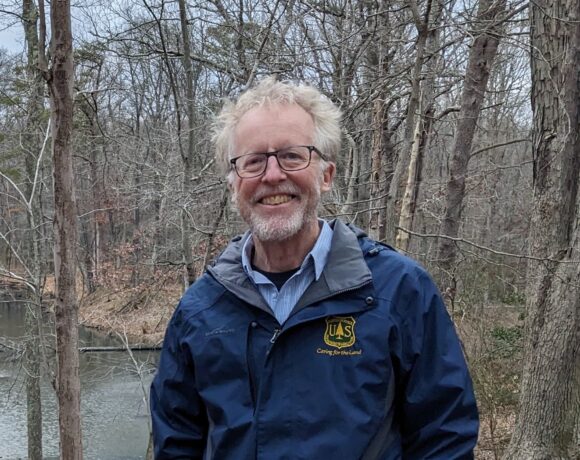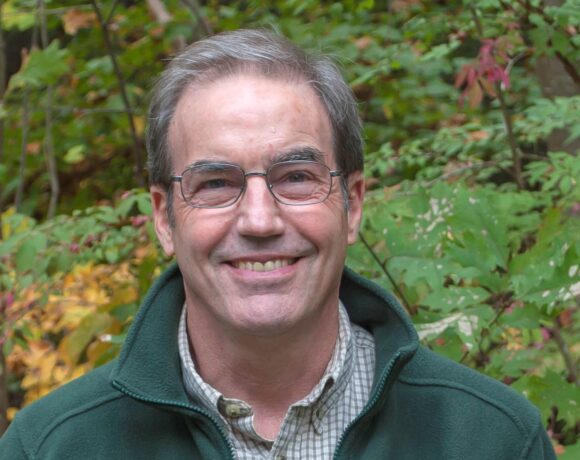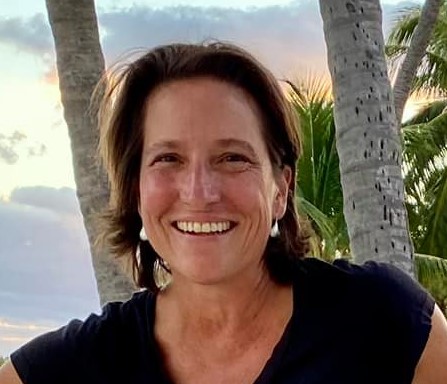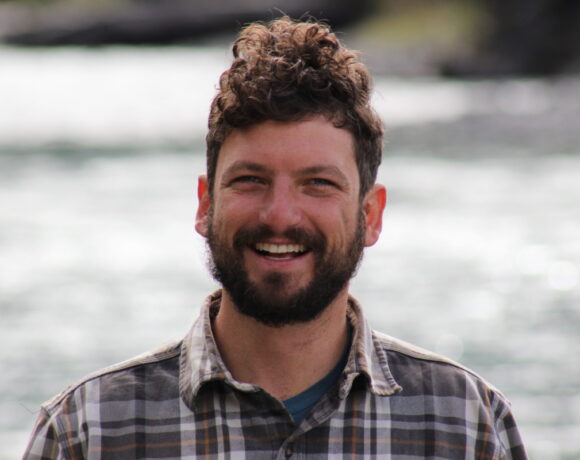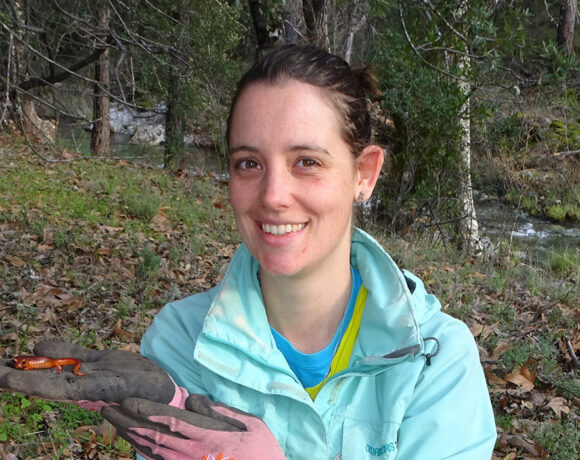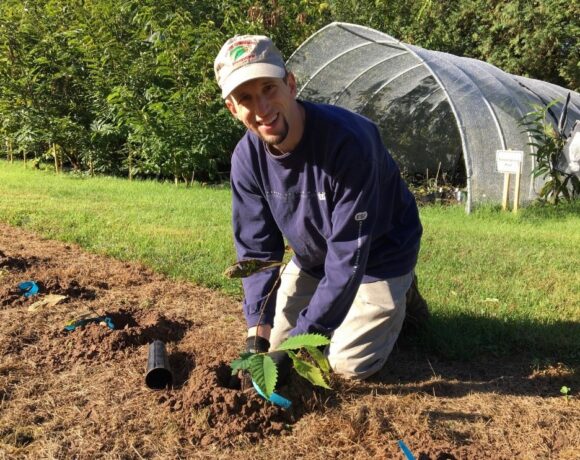This month, we reconnected with Dr. Julie Lockwood, an ecologist and professor at Rutgers who investigates how invasive species impact natural ecosystems through interdisciplinary research. In addition to her role in the Department of Ecology, Evolution, and Natural Resources at Rutgers, Julie also serves as Interim Director of the Institute of Earth, Ocean, and Atmospheric Science.
Watch the interview here:
View transcript:
Justin Dalaba (JD)
All right, so good morning, Julie. We’re really excited to have you here today and thank you for taking the time to talk with us. So, you know you’re recognized as a global leader really in invasive species research. And so, this interview is obviously too short of a time to go into everything that it is that you do, but just to dive right in, could you start out by telling me about you work at Rutgers and any additional roles that you hold?
Julie Lockwood (JL)
Yeah, sorry so. Our work right now is, I mean my general interest is in invasion science more broadly. So that’s kind of an interdisciplinary look at invasive species and how are they generated and how do we respond to them? So there’s some broader things I try to write or participate in related to that. And then in more detailed stuff we do. We work on aquatic invasive species, especially in the mid Mid-Atlantic. So that’s some, uh, well, it’s like New Zealand mud snails, it’s crayfish, it’s maybe some fish, it’s non-native mussels, so and then a little bit on coastal stuff as well, maybe a little bit of jellyfish. And then also on insect pests, especially with forests, especially in the Northeast where we’re kind of a global hotspot of forest pests and pathogens. And so we work on emerald ash borer, spotted Lantern fly. We might be moving on a little bit to Asian Longhorn beetle. And then we have our project going on coconut rhinoceros beetles on the Pacific islands, mainly in Hawaii. So it’s a little different from what I kind of like my prior research was mostly on non-native birds and still really love birds and still think about them a lot in terms of conservation. But in terms of invasive species and like getting down to what sort of beyond kind of the big picture things and I mostly work on aquatic invasive species and insects, forest insects.
JD
And I’d love to hear a little more about that. Uh, your background, because one of the goals with these spotlights is really to get to know the people behind the research. And so I’d love to hear if you’re willing to share a little bit more about your journey to becoming involved in these global research and conservation efforts. So why invasive species, you know, what’s driven you down this path?
JL
So when I was getting my PhD that was in the mid-90s and invasive species were kind of a topic then, but they weren’t like they are now. In part because, the kind of merging and a lot of disciplinary perspectives on invasive species hadn’t happened yet. And in part because honestly, we were still kind of on the upward curve of all the new you know, it was a different time in terms of globalization and the production of invasive species, so there just weren’t as many of them. So, my dissertation was mostly on community ecology. And I used non-native birds on islands as a natural experiment to test some theories in community ecology. So that was my introduction to, you know, non-native birds and what it meant to be, you know a non-native species. And then when I finished my PhD, I my postdoc advisor was Dan Simberloff, and so he’s the one who kind of brought that idea fully over into thinking about invasive species how we do today. So I would blame him maybe on that complete conversion, although I was introduced to the ideas of non-native species and everything before that. So yeah, working with him kind of brought it to he was he has always been someone who thinks about them both in terms of this big picture, and then also in terms of like what’s the real impact are they having and how do we deal with that? And so, I think I probably learn how to balance all that and do a lot of that. From working with him.
JD
And what an amazing mentor to have. I mean, just a major name in invasive species research. And now you yourself have become a major player in the invasive species research realm. And so, it’s really amazing to have this big picture outlook, but I’m hoping to dig a little bit deeper and narrow the focus on what are some of like your primary goals and key questions that you’re getting at invasive species with the current research you’re leading in, in your collaborations?
JL
Yeah, so I feel like so I spent a lot of time, especially as a kind of a byproduct of my dissertation thinking about what factors led to the establishment, like the initial establishment of a non-native population, and that led me into the whole propagule pressure idea and really thinking about that. And I’ve kind of moved earlier so one of the things that kind of when you start to see the data on the number of non-native species that we generate every year through global trade and globalization. And on the other end, you start to sort of experience either yourself or it becomes really clear what the impact of those species are and how difficult it is to manage them. Once they’re kind of here established and spreading, it like we have to pay more attention to the early stages of invasion, before establishment. Like, if we get to the establishment part or we’re well into establishment, kind of we’re in a bad place. So what’s driving you know, what do we do for prevention and what do we do for early detection and rapid response and how do you make those real? So that’s become a strong focus of my research just because I feel like that’s the best, our best solution that dealing with impacts once they’re here and materialized is a really difficult proposition for a lot of different reasons. And so, the best not that we can ignore that we can’t, we have to figure out how to do that well, but if we’re really going to make a dent, we have to move far earlier into the invasion process and think about what aspects of global trade are leading to introductions in non-native species and then? If there is an introduction or an early establishment, and how do we find it quickly and then move to eradicate or manage quickly when it’s manageable and cost effective and everything else? So, my research has really moved way towards that end. Prevention and early detection and rapid response because I see that as where we need a lot of research. And where I feel like we can get kind of the most bang for our buck in terms of invasion science.
JD
Yeah, absolutely. And you know, one of those emerging tools is environmental DNA or eDNA, which I know your lab does a lot of work with staying on the early detection end of things. So, I’m wondering if you could just kind of briefly walk me through the process of some of the research around eDNA that you’re using and what that looks like in some of the terrestrial and aquatic systems that you’re applying it to.
JL
Yeah, so I was not trained as a molecular ecologist, right? So, this is all very new to me and I rely a lot on my lab manager to do all the real work related to this. But my experiences actually working on the conservation side in this case mostly with birds and how difficult it is to find really rare species is probably what informed what I’m doing now. So, it’s the same problem. You still have to find them when they’re very, very rare or cryptic or difficult to find, expensive to get, too dangerous to get to whatever. So, what that means is that you often miss them when they’re just established. So environmental DNA was like a technological revolution really in that problem. And I could see that was the case and so I was like, we have to figure out how to do this. And at the time I was working on with a colleague on sort of what’s called sourcing invasions. And so, you take the sort of genetics? To figure out where one population where it came from, how did it get there? And that helped us move molecularly into the eDNA. So our big thing was realizing that some of the some of the tools that have been developed and are continuing to develop for aquatic DNA can be ported over to thinking about fully terrestrial species. And again, my interests is mostly through collaborations, I have good collaborators in forest insects. I’’s we developed new ways and sort of innovative new ways of picking up DNA that’s left on the surfaces of trees and plants. And then employing the same old eDNA thing that you do for aquatic DNA. So that’s been our real push as pushing the boundaries of the technology and very kind of low tech ways to help us use DNA for a much broader, sweeter species in a much bigger ecosystem or bio security type context.
JD
Yeah, there’s a couple of really cool things I picked up on what you said there, which is first of all, you didn’t have any background in in molecular studies. And secondly, this is all done through collaborations. So, this really powerful tool that not all that long-ago kind of felt out of reach is becoming more accessible. You’re able to integrate it into other sample collection methods, whether it’s, you know, rare, cryptic native species or invasive species. So, I wanted to now get your big picture outlook on it. So how do you view eDNA as a decision support tool in the broader context of invasive species management. And specifically, like are we at the point now where we can rely on this technology as a primary detection method or should it be complementary to other detection methods?
JL
We are very close to being to the point where you could rely on it as a primary detection tool. To we need to formalize some of the process. It’s too easy to pick it up and kind of develop something, and you’re not when there needs to be a standardization and formalization, right? That’s a next step before you could get to the point where it could be a primary, you know, signal that something is there. Until that happens, and I’m guessing we’re probably a decade away from that, maybe less maybe I’m being too pessimistic, but we’re going there. It’s very clear we’re headed there. Until that happens, it has to be integrated into sort of more conventional tools and a decision framework and the people in aquatic DNA and invasions are doing a great job of that. I just sort of take what they do and apply it for forest insects. Or agricultural insects or biosecurity for food and things like that. But right now, that’s where we are. There’s no, the policies and everything associated with triggering a, you know, any kind of federal resources or something to go after a newly established invasive species or to warrant using a pesticide or some sort of treatment, that will help, you know, have some damage. We are not even close to the point where you could use an eDNA detection to trigger that. So the policy has to catch up. The science has to get standardized, but they are inevitably going to happen, it’s there’s no way it’s not going to happen. It’s just a matter of time.
JD
Yeah, two really, really good points and. You know, I think invasive species managers here in New York are starting to look to other labs now and say, hey, how do we get the tools to do this ourselves or hey, we have water samples from this, you know, how can we collaborate on studies? And so, do you have advice on where you direct people when they come to you and ask questions like that or for land managers who are looking to get involved in eDNA that maybe don’t necessarily have the resources or capacity to do that?
JL
Yeah, so. There’s a lot of states that are moving towards having their own internal eDNA lab, and there’s definitely federal agencies that are moving in that direction as well, certainly U.S. Fish and Wildlife Service has some molecular eDNA labs that support fishing level of service tools or programs for eDNA. There needs to be more of them. And other federal agencies need to also decide, especially USDA, I think needs to, they’re slowly, I think, coming around to the point was like, oh, right, OK, so they already have molecular identification labs and tools because they’re constantly dealing with little bits of insect that they can’t figure out what it is, and so they’re using them like molecular tools to identify things, but they’re not moving it into eDNA. And they really are, they’re starting to do that and I think they’re going to end up doing that more so, there’s going to be more. That’s going to go into the federal and certification process and making sure all those things happen. But I also think that different states are going to develop their own eDNA labs. There’s also lots of commercial labs, and that’s a good sign, especially for a small land manager, something that feels like they want to use eDNA and anything that they’re doing is to look to the commercial labs because they can realize an economy of scale. That makes it affordable. For that to for them, for a smaller group to be able to do this. And the more commercial labs there are, the more competition there is. It’s really actually a burgeoning industry on its own. Again, there’s a need for standardization, so it’s growing fast. There’s a private part, there’s a state part, there’s a federal part. All these different lamps are so coalescing and becoming… can develop and process lots of DNA survey samples and deliver that data back to who needs it?
JD
Yeah, that’s awesome. And you know, thinking about affordability and allocation of resources, that’s always a limitation for managers. And so, from your perspective, I’m hoping you can maybe boil down your, your experience and understanding of invasive species challenges to like. For those who are kind of looking for maybe that fortune cookie piece of advice, right, like what do we do with our time and resources? What do you think is the most important thing that they should know?
JL
Yeah. So. I feel like there’s sort of two pieces to that. One is that – Especially on a smaller scale, if a land manager or somebody more locally is trying to deal with an invasion, you know the continued sort of onslaught of invasive species in their area – Is to is to avail themselves to the extent that they can on. What Sort of evidence-based solutions to what it is they’re doing. So all too often it just becomes kind of a seat of your pants kind of response to what’s happening. And especially when money is tight. Trying to prioritize a little bit in terms of what you’re going to do because you can’t respond to every non-native thing that shows up either in your river or your stream or your wetland or your forest. So how do you best use those funds? So there is a fair amount of evidence now you know or information, I guess more broadly on a lot of different species. So a little bit of investment in that time at time will be helpful. Also investment either in your own sort of priority, how you just sort of sit down and think about what the priority is based on the knowledge that you can glean and some sort of system for you to make those priorities and justify them. Or reporting somebody else is over and making it useful for you. Just a little bit of a heads up before making decisions to help prioritize, because if it just becomes kind of a, you know, panic response, panic response or noticing response, noticing response. It’ll become quickly, very overwhelming, and then the sometimes the response to that is just I’m not going to do anything. Picking your battles and doing that in a way that’s sort of a little bit more systematic and informed as best you can by some of these global and other databases that exist. Maybe even having someone on your staff, that’s actually kind of a good data geek to help access all that information because it’s not, a little bit of an investment on that kind of person can help you figure out – What is the best response these days or don’t bother because it looks like everywhere else that’s peaked and then it’s gone down, so it’s OK. We can probably that would be or. No, no, no. You gotta act right now on this one. Here’s the best solution. Just any kind of help with prioritizing and using that kind of information to help people prioritize because it is, it becomes overwhelming very quickly.
JD
Yeah, absolutely. And the information is overwhelming as well. You know, there’s so much new research coming out and it’s like, how do you distill that all and make informed decisions? So I applaud your efforts in responding to that cause I recognize how complex of a question that is. But yeah, I appreciate your outlook on that. And you know, in terms of resources advice, I know you’ve obviously published a number of research articles, but you’re also co-author and have edited several books, and you have two new books coming out now, one specifically on invasive species, a short review. So, I wanted to ask now what lies ahead for you and for your research interests.
JL
That’s a great question. So my research will probably continue to move along the eDNA and early detection side. I feel like all the things I indicated to you are places where I feel like I can make a difference. I also am very interested in that interface between sort of the anybody who’s local and need all that information and. We need that bridge right to be that a data bridge or just an evidence synthesis bridge or something because I think there’s a strong need for that so that I’ll continue to move along those areas. And then at Rutgers, I’m helping lead a group looking at or get an institute sort of stood up on climate change and renewable energy. So that one I think is an obvious one it’s impossible to ignore this. So taking whatever I’ve learned in terms of dealing with invasive species and thinking about how we’re going to respond to things like, climate change, and then the movement into renewable energy. And then of course, for me, there will be an invasive species component to that so. So how is climate change interacting with invasive species, not just individual invasive species, but the whole process? Like you know, what does it mean when shipping traffic changes? In terms of the species that we’re going to have and then are there any like unexpected chances for restoration because suddenly this species it was unmanageable, does not do well in a new climate. Do you have a chance? What do you do? And then the same thing on the transition to renewable energies, there’s we’ve desperately need that to happen, but we also don’t need to exacerbate invasive species issues in the process. So, the extent to which we can walk in, heads up to that question, we’ll thank ourselves or maybe our kids will thank us a bit more, later on. My research is sort of heading down those paths. And, also my sort of administrative life is heading down those paths.
JD
All really, really exciting topics to be exploring and I’m glad to hear that you’re so interested in not only like the climate change angle, but the renewable energy development and how that’s going to potentially exacerbate impacts or have additional impacts of its own. And you know, how do we inform more sustainable renewable energy development? That’s all great to hear. I’m excited to see how your work develops and evolves. And obviously we could spend a lot more time exploring these questions, but given our short time frame here, I did just want to leave you with one question, which is, is there anything that we didn’t discuss that you really wanted to add?
JL
There’s a one big picture piece, and that’s sort of continuing to break down these sort of disciplinary invasion science is very interdisciplinary. But even as biologists, we tend to put up walls between marine invasive species and terrestrial invasive species and freshwater. And plants versus animals and it’s so counterproductive both in terms of what we can learn from each other. And seeing the bigger trends for what they really are and including maybe activating some of our policy solutions in a more comprehensive way, because there’s a, there’s a whole lot of agencies who have this as their component and they don’t often talk to each other. And to the extent that we can kind of encouraging them to break down those walls and talk to each other would be pretty helpful. We tend to experience invasive species as sort of one-off events, not helped by the fact that they all get put into New York Times as one off. Oh my God, you know, murder Hornets. When the reality, of course, is… if it feels like we’re seeing more of those, it’s because we are experiencing more of those and so they are part of a bigger trend. And responding to them as one-off events is fine, but it’s not, it’s not comprehensive and it’s a little counterproductive sometimes. So, let’s break down the walls a bit as best we can and see if we can’t find bigger or more comprehensive approaches to the solutions we need to undertake.
JD
Yeah, comprehensive and collaborative. I love that. And it speaks, you know, exactly to what our mission is as an institute, just trying to bridge that gap and get the communications and collaborations happening to, you know, advance the science and advance our understanding of how do we manage with such limited resources? I think that’s a really great way to round out this conversation and a great note to end on. So, Julie, I wanted to thank you again for your time in talking to us and yeah, I really look forward to sharing this with our network.
JL
Yeah. Thank you.
Learn more about Julie’s work here: http://www.lockwoodlab.com/
More researcher spotlights:



